'Uncle, one Colombian chicken': Exotic cuisines hit hawker centres
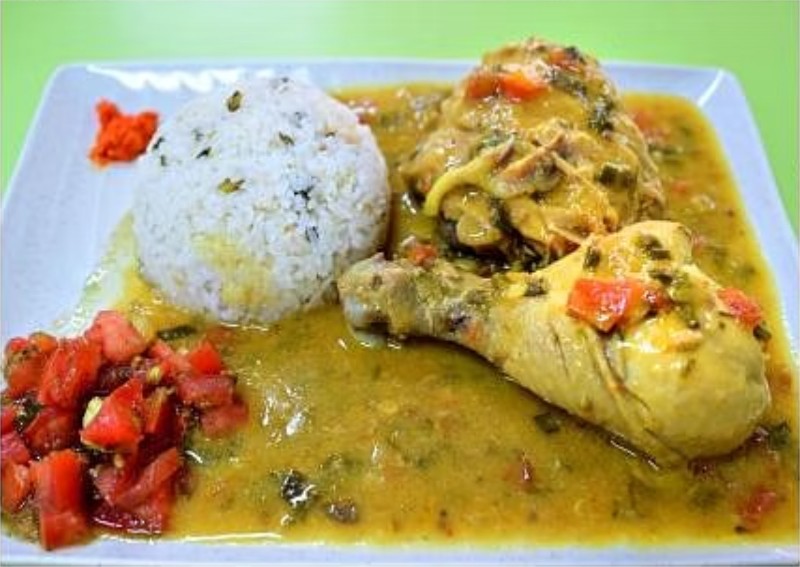

SINGAPORE — There are a few ways to set yourself apart from the rest of the pack as a hawker.
You could plaster your stall with newspaper clippings and celebrity photographs — if you have those — for that gleaming seal of approval. Alternatively, you could price your food at unbeatable rates. Who is going to say no to $2 nasi lemak?
Or you could serve dishes few Singaporeans have tasted in a hawker centre, if at all.
For instance, ever tried Colombian chicken?
There is no need to book a ticket to South America; you will find it at Tee Kitchen. The stall in Golden Mile Food Centre is run by Tan Yang Tee, 56, and his wife, Lim Li Lian, 54.
After growing stagnant in their careers — he was a retail sales executive and she, an administrative executive for a hardware company — they quit in 2019 and decided to indulge Lim's passion for cooking.
The couple first tasted the Colombian-style chicken stew they now serve at a party hosted by a relative's friend, who hails from South America.
It was love at first bite. They knew instantly that this was the dish they wanted to share with fellow Singaporeans.
But diners were initially sceptical when they opened their stall in Beach Road in 2020.
"This is a pretty mature estate with many seniors, who are more reserved. At first, they didn't know what Colombian chicken was and didn't dare to try because they thought it was very spicy, like curry. They didn't dare to ask either because they didn't want to bother us," says Tan.
Such are the pitfalls of taking culinary risks in a space synonymous with tradition and reliability.
"Unusual cuisines don't have longevity," says Glen Choi, who used to run Nen Nen Contemporary BBQ, a hawker stall at Kallang Estate Market and Telok Blangah Drive Food Centre selling Japanese barbecue.
He shut both outlets after three years of operations in October 2023 as sales continued to dip even after the pandemic.
"You have to keep changing your concept to maintain sales," says the 50-year-old, who now works an administrative job, adding that he found it hard to keep up with competitors, which included fellow hawkers, casual dining chains and even restaurants.
The key to survival is building up a loyal base of regulars, according to a hawker who wants to be known only as Odi. He has been running Rasa Raja Bojun Sri Lankan Food, a stall selling a range of meat and vegetable curries, at Tekka Centre for the past 15 years.
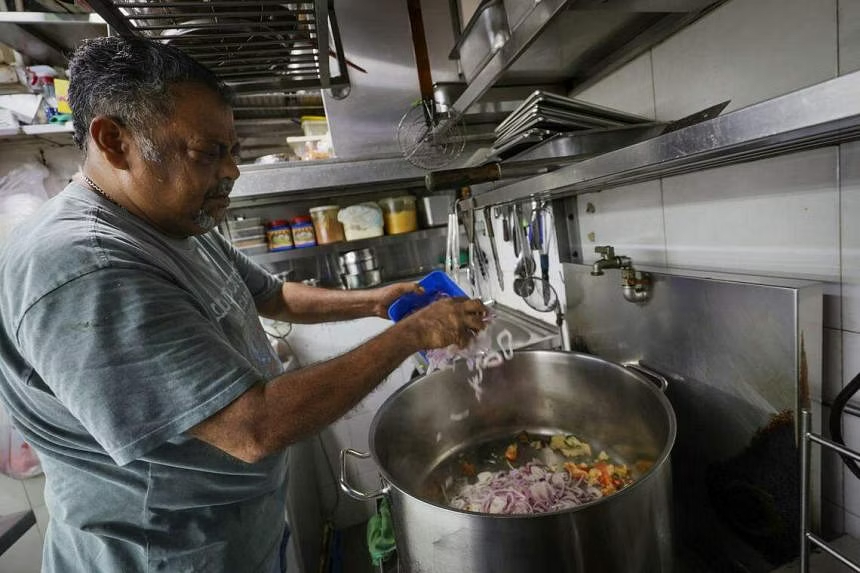
"When I moved to Singapore from Sri Lanka, I noticed that nobody here was selling Sri Lankan food. So I wanted to introduce the cuisine of my homeland to Singaporeans," says the 54-year-old, who used to work at the now-defunct Italian restaurant Michelangelo in Jalan Merah Saga.
"Now look at us, we have 4½ stars on Google. People know they will get fresh and affordable food here," adds his co-worker Sam Dharmasiri, 50, who helps to man the stall.
However, Rasa Raja Bojun's days at Tekka Centre may be numbered. Now that business has taken off, Odi wants to start a restaurant in 2024.
He is not the first hawker with dreams to upsize and upgrade to full kitchen operations.
Micah Lim, 35, chef of 71-seater restaurant Micasa Kitchen & Bar at Beauty World, started his independent culinary career selling paella and tapas at Bukit Timah Hawker Centre in 2015.
"I had always wanted to have my own restaurant. I think most people working in F&B dream about it at some point in their life," he says.
He got his wish a year later in April 2016, when he moved down the street into his own restaurant. But that meant having to shutter his hawker stall to avoid spreading himself too thin.
Albanian chef Klevis Shima, 40, was initially reluctant to make a similar trade-off. Together with his wife, 43-year-old Ali Wong, he opened HaPiHa, a hawker stall selling Mediterranean dishes at Beauty World Food Centre in 2021.

Though he always had a progression plan for his business, he wanted to retain his hawker stall too. But once he set up a 28-seater eatery at Ridgewood Close in October 2023, he realised he did not have enough manpower to run both outlets.
"We were losing revenue as we had to close the stall early and couldn't focus. We had only two to four hours of sleep on many nights," he says. "So we decided to close the Beauty World hawker stall as we invested a lot more in the Ridgewood restaurant. Or else, we might end up losing both."
But there has been a silver lining to going all in on the restaurant, also named HaPiHa.
Though costs have gone up, so has revenue. Their kebabs, in particular, are finally turning a profit. A chicken kebab wrap that used to retail at Beauty World for $7.50, for instance, now goes for $13.90, with an added side of fries.
So the jury is still out on whether international dishes will work in hawker centres, as Singaporean food critic KF Seetoh, who is also the curator of the Urban Hawker food centre in New York, sees it.
"New flavours are often just a fad in traditional hawker centres," he says. "People usually go back for the same comfort food, after a fling with the new stuff."
Chef-consultant Jeremy Nguee suggests that this could be why some hipster hawkers tend to throw in the towel after just a short while.
"If you have a clear purpose — to preserve your mother's legacy or to serve the community — that will keep you sticking to the job a little longer. However, if you are merely experimenting with a fad, hoping that trend sticks, you might be more tempted to cut the exercise short when you know the experiment is not working out."
He adds that certain cuisines such as Japanese and Korean food, which revolve around more expensive ingredients, may not be suited to the economical pricing model of hawker centres.
"Hawker stalls operate in a near-perfect competition scenario, so their pricing is forced to be very competitive to local dishes, even when their cost model does not allow them to sustainably do so," says Nguee, who runs confectionery Mrs Kueh and spice paste brand Batu Lesung Spice Company.
Japanese chef Tsutsui Takahiko, 62, who until recently ran a stall selling sashimi, sushi rolls and ramen in a coffee shop at 40 Holland Drive, refused to bow to competition and drop his prices.
Dishes there were sold at the same price as at his 40-seater restaurant in Clementi, Yosakoi, which has an almost-identical menu.
"You get what you pay for," he says by way of explanation, arguing that his ingredients for both venues arrive fresh from the same suppliers that stock his restaurant: Salmon from Norway, scallop from Hokkaido and yellowtail from Kyushu.
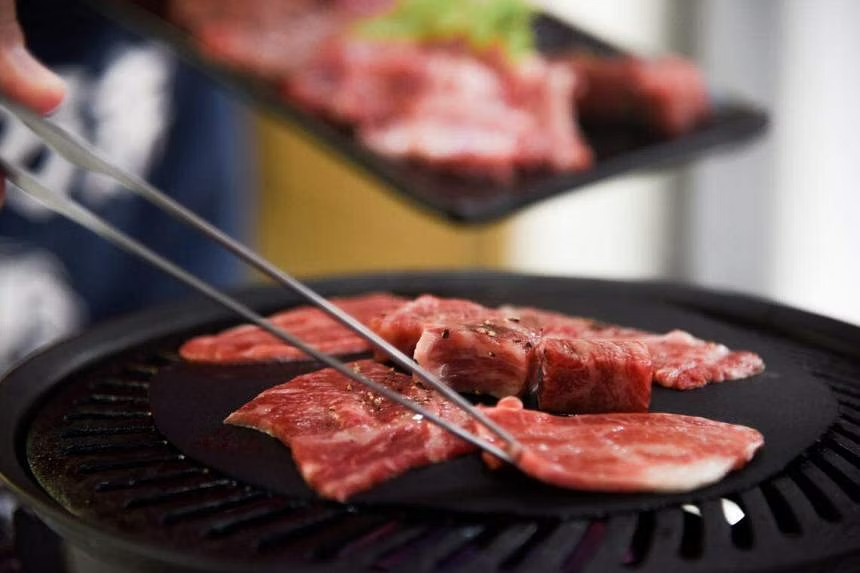
But he could hold out for only so long. Diners were unwilling to fork out $18 for a bara chirashi don or $12 for tendon (tempura rice bowl) in a hawker centre. After nearly three years, Takahiko cut his losses and closed the stall in early March 2024.
"It might also be that customers crave a more authentic or immersive experience when enjoying such dishes," says Nguee. "Perhaps, eating paella or enjoying sashimi is less about the food and more about the ambience."
Still, he urges hawkers not to abandon the idea of offering international fare altogether.
"It's good to try and it's okay to make mistakes. Our hawkerpreneur model should accommodate experiments and support innovation. After all, this is what hawker culture is about."
And, as Seetoh points out, attempts to make them work inject a welcome burst of colour into a food landscape prized for its eclecticism.
"New comfort flavours from around the world serve to make the Singapore menu more dynamic."
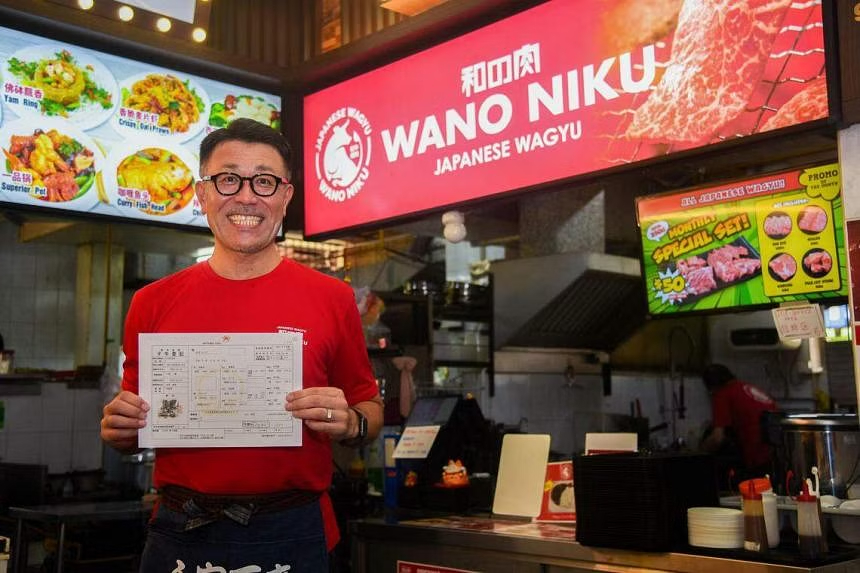
Where: Wano Niku, 01-2922, Block 181 Ang Mo Kio Avenue 5
MRT: Lentor
When: 11am to 2pm, 5 to 9pm, Thursdays to Tuesdays
Info: www.wanoniku.com
Tetsuo Komine's first yakiniku experience in Singapore some three years ago was nothing like what he was used to.
"The beef, which the stall said was Japanese wagyu, was awful. The colour of the meat was dark and it just wasn't fresh at all," recalls the 54-year-old marketing company director-turned-hawker with a grimace.
Fuelled by disappointment and indignation, the Japanese national set out to "show Singaporeans how yakiniku should taste, even at an affordable price".
He convinced a friend, who imported Japanese meat into Singapore, to come on board as his business partner, and his stall Wano Niku was launched — first in a Tanjong Pagar coffee shop in 2021, then in an Ang Mo Kio Avenue 5 coffee shop in 2022.
He serves A4 wagyu beef — he has the certificate to prove it — and pork from Kumamoto, both imported straight from Japan. His prices are so low, he says friends in the industry have raised their eyebrows at his business model.
Beef starts at $9 for a 100g bowl of karubi and loin cuts. These are marinated in one of the stall's three special sauces: Soya-based, spicy or salt-based.
They may not be the choicest cuts, but they certainly do not taste like odds and ends. The strips of beef are tender and fatty, and pack a savoury punch.
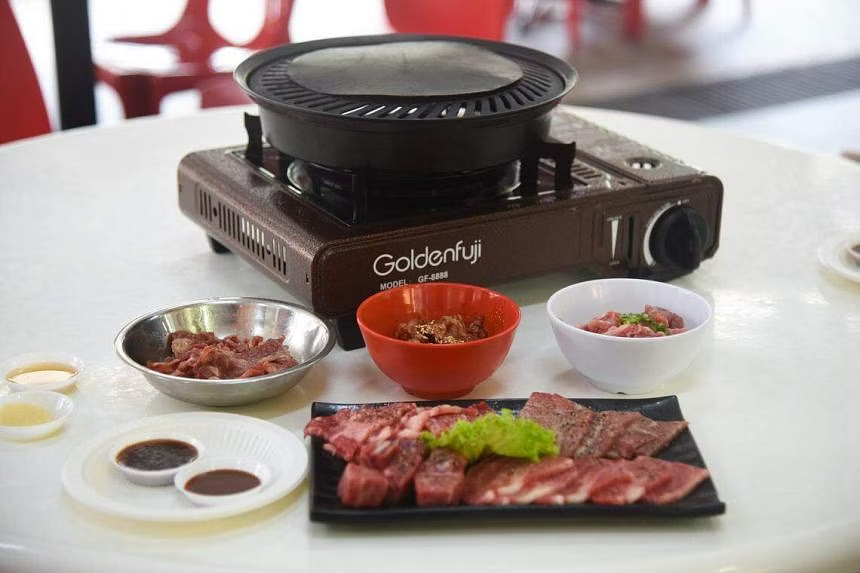
But if you crave something more luxurious, go for the premium Karubi ($12 for 50g) or dice-cut steak ($21 for 100g). There is also a monthly special platter ($50) that features 100g premium loin strips, as well as three 50g portions of rare cuts. No additional fat is needed — these cuts are so marbled, they oil the grill themselves.
Admittedly, Komine's friends may have been right. He says the stall makes only about five per cent profit with its current prices. He has had to raise the price of some menu items by about 50 cents in 2024 to account for the goods and services tax hike, but is wary of raising them too much.
"I know many Singaporeans want to try Japanese wagyu, but can't afford to pay the high prices in restaurants. So I will try to serve it to them here at a more affordable rate."
He adds: "They should have the chance to taste Japanese wagyu. It is totally different from any other type of beef."
And, savouring the buttery glide of this long-travelled Japanese cow down my throat, this writer thinks he may be right.
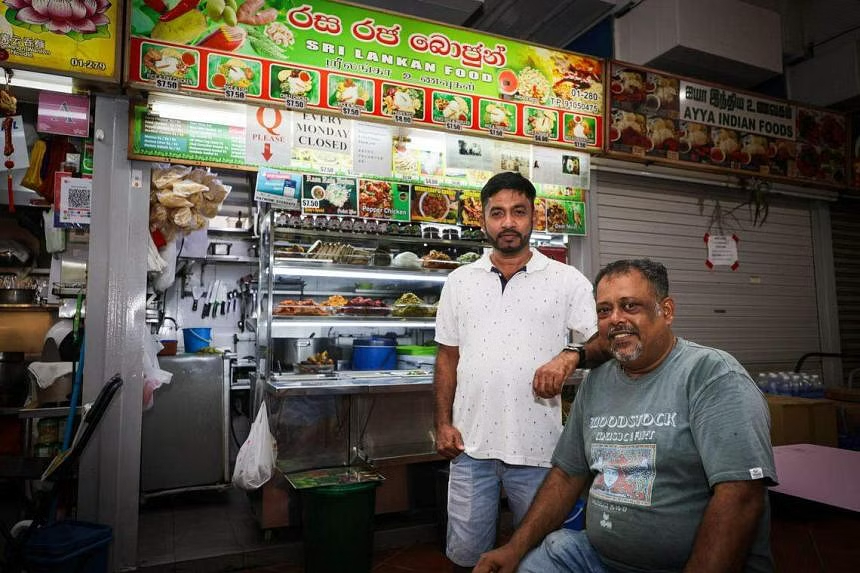
Where: Rasa Raja Bojun Sri Lankan Food, 01-280 Tekka Centre, 665 Buffalo Road
MRT: Little India
When: 9.30am to 9.30pm, Tuesdays to Sundays
Info: www.facebook.com/rasarajabojun
It starts off innocently enough: A pile of rice on a banana leaf, then some chicken, stewed in a caramel-coloured gravy. But Sam, my server, keeps going.
Heaps of vegetables in every colour — reds, greens, yellows, purples — are piled on. They unfurl from the central mound of rice like the petals of a giant, delicious flower.
Sam wraps it all up with brown waxed paper, collects my $8 and hands me the hefty package. "Enough for two," he says with a smile.
Indeed it is. I start to regret ordering a plate of string hoppers ($4.50 for three) too.
Rasa Raja Bojun Sri Lankan Food is a stall you will want to visit with friends and a large bottle of water, or whatever liquid best soothes your burning tongue. It is one of the few places selling Sri Lankan fare in Singapore and offers a fiery introduction to the South Asian island's gastronomic highlights.
The stall cycles through a roster of meat dishes that are available on selected days of the week: Mutton liver on Wednesdays and Sundays; deer meat on Fridays, Saturdays and Sundays; and various chicken dishes the rest of the time.
I go on a pepper chicken day, and get three drumettes served with so many sides, the chicken quickly goes from main character to part of ensemble cast.
All of them — the chicken, mango curry, papaya curry, beetroot salad, mallung (spinach fried with shredded coconut) — are drenched in flavour. It is the kind of saline abundance that makes your taste buds tingle in delight and your arteries shiver with foreboding.
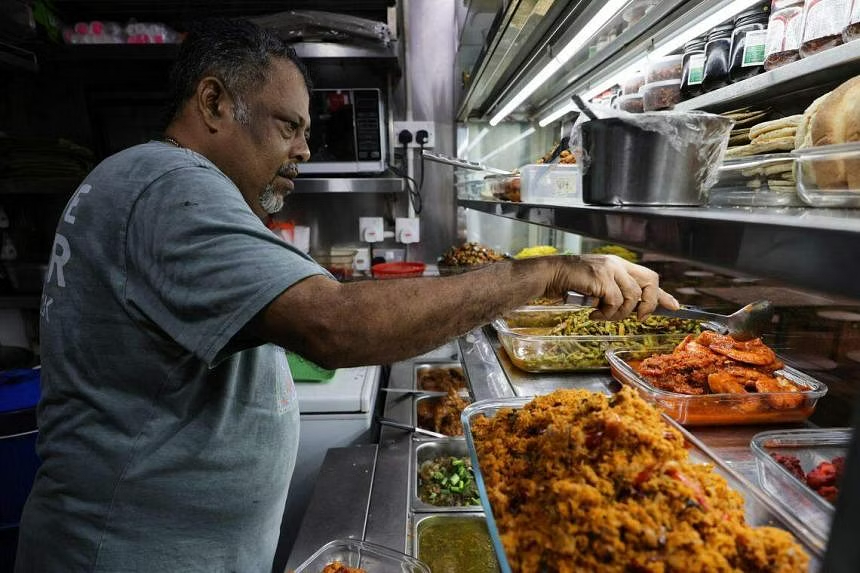
Within this lusty mound of meat and vegetables are stacked layers of culinary nuance: sweet, sour, nutty and, above all, spicy. Prices start at $3 for curry chicken and $2 for a vegetable curry.
I dig into my hoppers — a breakfast staple of steamed rice flour better known as putu mayam here — in the hope that it will help to dull the sting from the curries.
Fat chance. It has been topped with a punchy coconut sambal, bright golden dal so robust it tastes almost meaty, and more of the coconut milk gravy that crowns the rice set.
It eviscerates my tongue, but I keep going anyway. Some meals are just worth burning for.
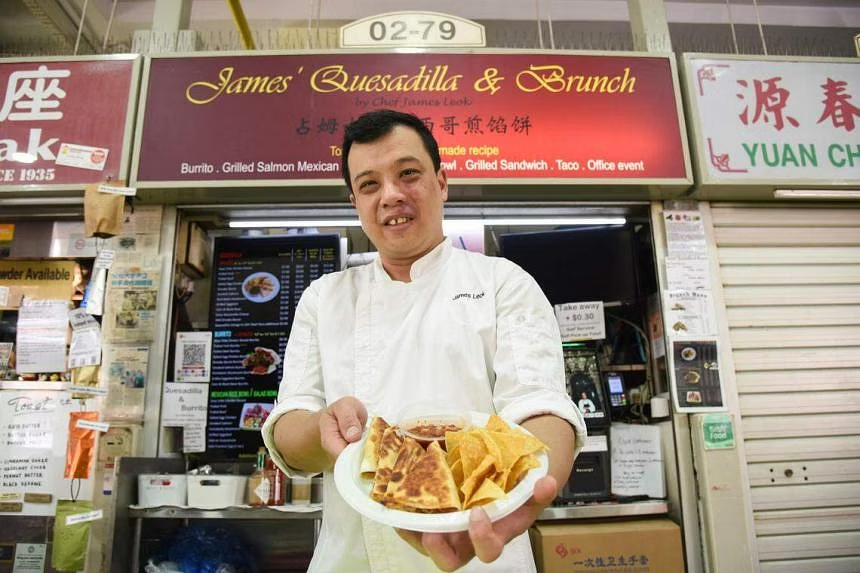
Where: James' Quesadilla & Brunch, 02-79 Amoy Street Food Centre, 7 Maxwell Road
MRT: Maxwell
When: 7.30am to 3pm, weekdays
Info: www.facebook.com/jamesquesadilla
Tanjong Pagar has no lack of Mexican eateries. There is rotisserie Chico Loco in Amoy Street, taco haven Muchachos in Telok Ayer Street and, of course, the omnipresent fast-food chain, Guzman y Gomez, a stone's throw away at Tanjong Pagar Centre.
But there is only one place where you can get a plate of quesadillas for under $9. James' Quesadilla & Brunch is a tiny, unassuming stall on the second floor of Amoy Street Food Centre.
It has an extensive list of offerings — two separate menus for brunch (starting at $3.50 for a scrambled egg breakfast burrito) and lunch (from $5.50 for a corn and black bean burrito) — that has only continued to grow over the years as chef James Leok tries to accommodate customers' requests.
He cut his teeth in the kitchens of various restaurants around Singapore serving Mexican food — Spruce Taqueria at Tanglin, for example, then the canteen at the Google Singapore office in Pasir Panjang Road — before venturing out to run his own ship.
Here, the 38-year-old modifies the recipes he spent the early part of his career cooking. Spice is toned down for the Singaporean palate and there are lighter set options for more health-conscious patrons. It swops out salsa for guacamole, but keeps the chips and fried quesadillas.
Chef Leok typically recommends picking sous vide chicken breast ($7 for a four-piece quesadilla) for a less hearty meal, but it has sold out by the time I visit towards the end of his workday at 3pm. So, I opt for the other favourite: The pulled pork quesadilla (from $7 for four pieces).
Thoroughly marinated tendrils of pork are nestled between toasted flour tortilla pockets, sealed shut with an oozing blanket of mozzarella cheese. Each bite is a lively medley of textures: the crunch of purple cabbage, the sweet tang of onion, the gooey warmth of melted cheese and the tender bite of pork.
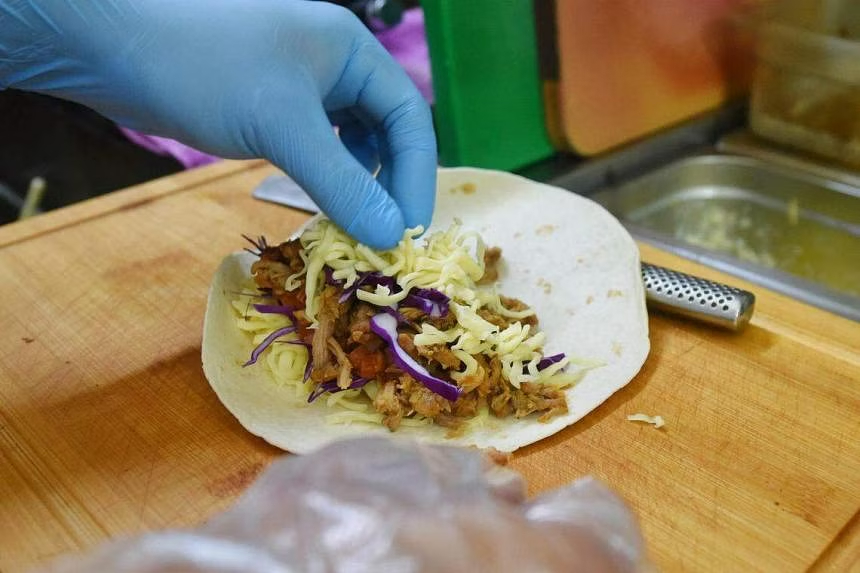
The real healthy option is the burrito bowl: a generous stack of rice, lettuce, purple cabbage, sweet corn, tomato salsa, black beans and protein — in my case, pulled beef ($7.50). There is that same interplay of textures and flavours, as well as an undeniable freshness in each bite.
But I miss the magic of heat. It is all a bit too clean for my taste.
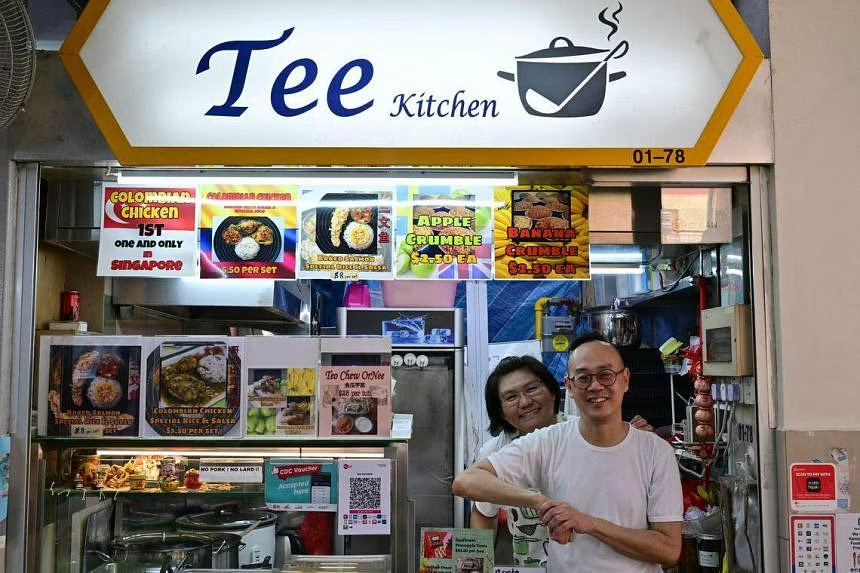
Where: Tee Kitchen, 01-78 Golden Mile Food Centre, 505 Beach Road
MRT: Nicoll Highway
When: 10.30am to 3pm, Wednesdays to Sundays
Info: str.sg/nREi
It takes a while before Tan Yang Tee, 56, one-half of the couple behind Tee Kitchen at Golden Mile Food Centre, is able to sit down and chat with me.
Every time he ventures out of the stall, a customer appears to order a plate of Colombian chicken ($5.50) or baked salmon with olive rice ($8).
He shoots me an apologetic glance as he retreats behind the counter. Duty calls — it cannot be helped.
Business is brisk. After a slow start four years ago — partially due to the pandemic, partially due to the fact that he sells a relatively exotic dish in a mature estate — he has built a regular base of customers.
Among them — to the delight of Tan — is a group of Colombian expatriates, who have spread the word via a WhatsApp group of fellow countrymen.
Some have even donated Colombian trinkets, which Tan proudly displays at the front of his stall.
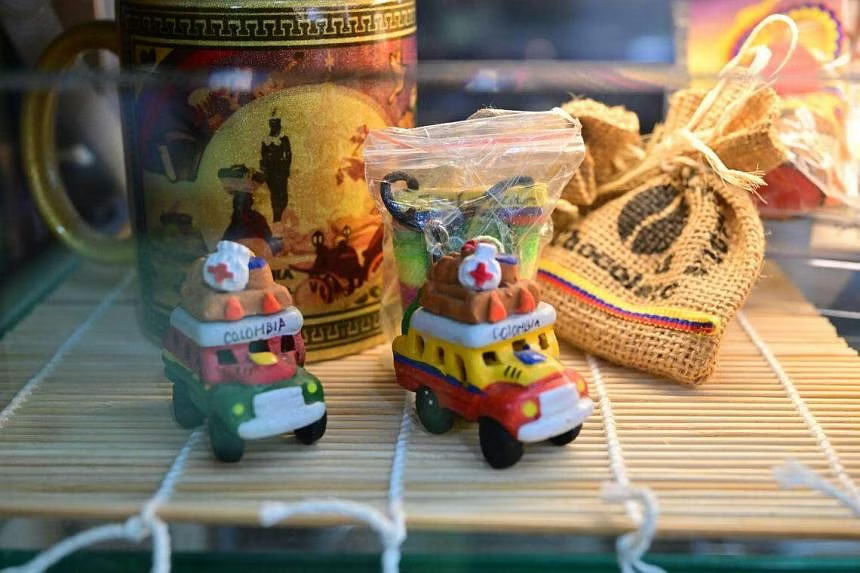
For Tan, success is twofold: Monetary profit — still out of reach for now, with the stall just starting to break even — and customer satisfaction.
He has achieved the latter, at least.
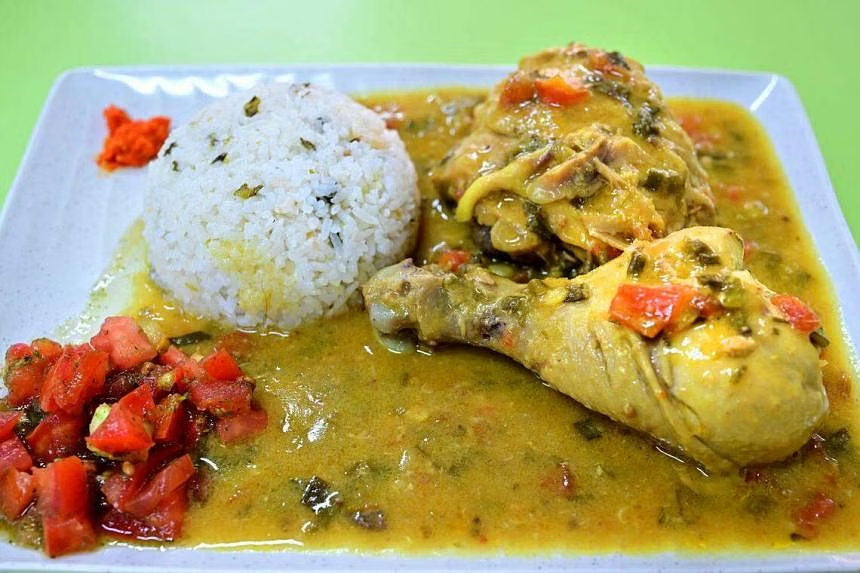
It is hard not to feel well-fed with a generous whole chicken leg, stewed in a luscious golden gravy of tomatoes and herbs. It is tender, zesty and immensely satisfying — even more so with a tiny sprinkle of chilli that adds a spark of heat.
I am not the only one who thinks it tastes like home-cooked goodness.
Tee gleefully tells me that his Colombian diners have paid him the ultimate compliment: His stew reminds them of home.
This article was first published in The Straits Times. Permission required for reproduction.